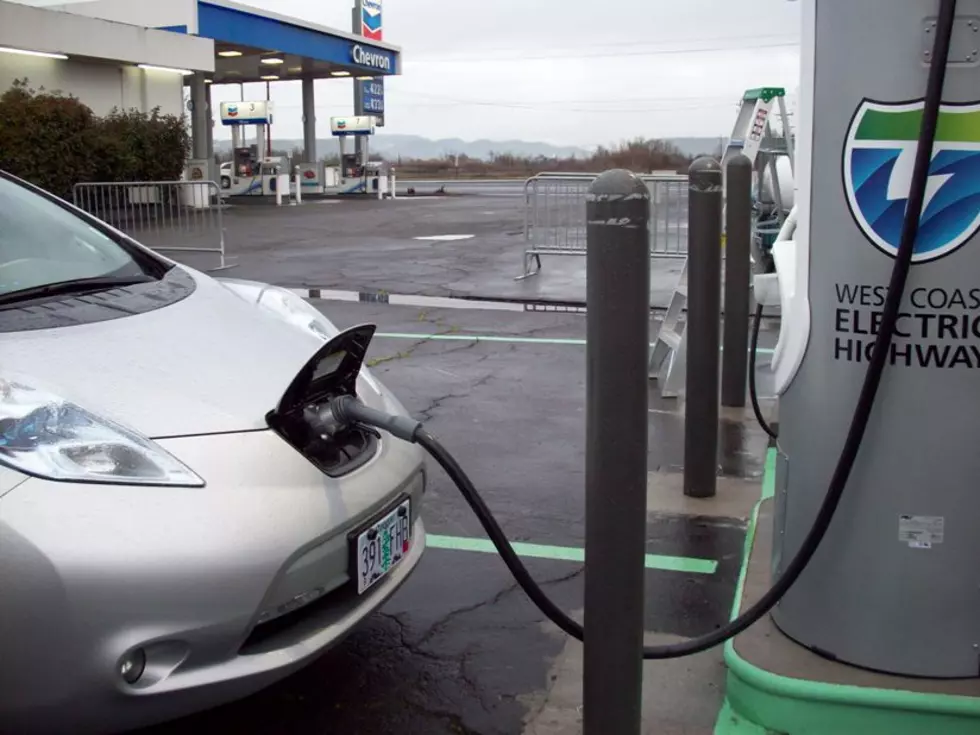
A new roadmap to speed the spread of electric vehicles in WaState
Jerry Cornfield
(Washington State Standard) When it comes to meeting Washington’s ambitious electric vehicle goals, bolder cash incentives and charging outlets in thousands more locations are needed now.
Rules pushing drivers to forgo cars and trucks that run on gas for ones powered by batteries are needed soon.
And an aggressive outreach and education campaign must be sustained if the state hopes to expand electric vehicle ownership and slash vehicle emissions statewide.
Those are the major prongs of a forthcoming report that’s intended to provide the state with a blueprint for getting more electric vehicles on its roads.
A public draft of the Transportation Electrification Strategy is expected as early as today, with a public hearing planned for Oct. 11. The Electric Vehicle Coordinating Council, with members from multiple state entities, including the departments of Transportation, Ecology and Commerce, is preparing it.
A majority of recommendations will be geared toward accelerating the transition to battery powered cars, trucks, buses and big rigs.
Expect calls for making car and truck incentives more generous, offering them on a wider range of models, and providing some rebates upfront.
Ensuring all residents can access charging easily underpins several ideas. These include requiring outlets for plugging in vehicles in new construction of multi-family developments, installing them in public light poles, and providing hook-ups for trucks and big rigs at ports and other industrial areas.
Allowing consumers to buy directly from automakers, rather than through dealerships, may be suggested. Currently, only Tesla can sell directly to customers in Washington, according to the staff of RMI, the consultancy hired to assemble the document.
An earlier report from the consultants emphasized that “the state can no longer leave any policy option untapped to increase EV adoption.”
Another set of recommendations under consideration is designed to further drive down emissions from the transportation sector, which account for 39% of all emissions in Washington.
Several of these proposals target medium- and heavy-duty trucks, many of which run on diesel. Ideas include enacting an anti-idling law and offering financial incentives for companies to scrap old heavy-duty vehicles and construction machinery and go electric.
No time to waste
The Move Ahead Washington transportation package passed last year set a target that all passenger cars and light duty vehicles “sold, purchased or registered in Washington” be electric starting with the model year 2030.
Even with the electrification strategy, the state is unlikely to meet the goal.
Sales of electric vehicles, including plug-in hybrids, are climbing but remain a tiny portion of cars on the road. Washington had about 8 million registered vehicles on Aug. 31 of which 150,482, roughly 1.9%, ran fully or partially on battery power, according to Department of Licensing data.
Meanwhile, an RMI analysis found the state will need to build around 1.3 million charging ports by 2030, increasing to 3 million by 2035. Accomplishing that requires putting more money into the effort and speeding up the distribution of those funds, consultants said.
Switching to battery-powered vehicles quickly is critical to the state achieving a second ambitious goal – shaving the state’s overall greenhouse gas emissions by 45% below 1990 levels by 2030.
Washington spewed 102.1 million metric tons of emissions in 2019, the last fully reported year. To meet its target, the state needs to be down to around 50 million by the start of the next decade.
Charging ahead
A preliminary draft of the electrification strategy circulated earlier this month by consultants contains 41 pages of recommendations. They were compiled through research, modeling and eight months of meetings involving the EV Council, the state’s Electric Vehicle Advisory Council, and community leaders.
To reach the vehicle sales goal by 2030, the state needs to get new EV owners across all incomes and in all communities, the consultants said.
But steps like offering better incentives and installing charging stations will only be valuable if the public knows what’s available and where. Several recommendations focus on getting out information.
The coordinating council suggests creating a new clearinghouse with information on how to access electric vehicle incentives, grants, and programs offered by governments, utilities, and community organizations.
And the EV council backs providing funds to community-based organizations to disseminate information on electrification efforts in rural and minority communities.
Cars buyers are going to get a lot of attention in the report.
Requiring dealerships to post available electric vehicle tax credit and incentive information for each model, and to provide it upon request to potential buyers is an idea. This would require a new law.
A “social leasing program,” where EVs can be leased by individuals below an income threshold for an affordable monthly rate, is in the works at Commerce and should be deployed, consultants said.
To make charging affordable to all, the state should allow electronic food assistance benefit cards to also be used to charge at discounted rates.
Not everything in the report is about cars.
The preliminary report backs enabling communities to add EV chargers at public light poles as long as they don’t impede pedestrians or become visual obstacles.
And it calls for beefing up technician training programs to ensure an adequate supply of workers capable of installing and fixing charging ports at homes, offices and throughout communities.
A final section looks at planning now for even bolder steps in a couple years.
“Washington has made tremendous strides in recent years” to establish itself in the fight to protect the planet, consultants wrote in an early draft. “Yet, as the [Transportation Electrification Modeling] has made clear, Washington must do even more.”
